

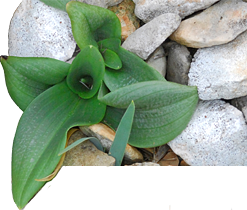
The Massif de la Clape is a small limestone massif of 15,000 hectares which stands by the sea between the towns of Gruissan and Narbonne Plage.
The site is made up of a succession of rocky plateaus where the low scrubland dominates, separated by often deep valleys where vast pine forests made up mainly of Aleppo pines have taken root. Its highest point is the Pech Redon which rises to 214 m. The massif is traversed by paths and small roads which allow access to some local curiosities such as the Oeil Doux chasm, the marine cemetery (Notre Dame des Auzils) or further south, the coastal lagoon of Gruissan with their resident flamingo populations.
The vine is widely present in the Massif de la Clape. It occupies part of the most open valleys and produces quality wines.
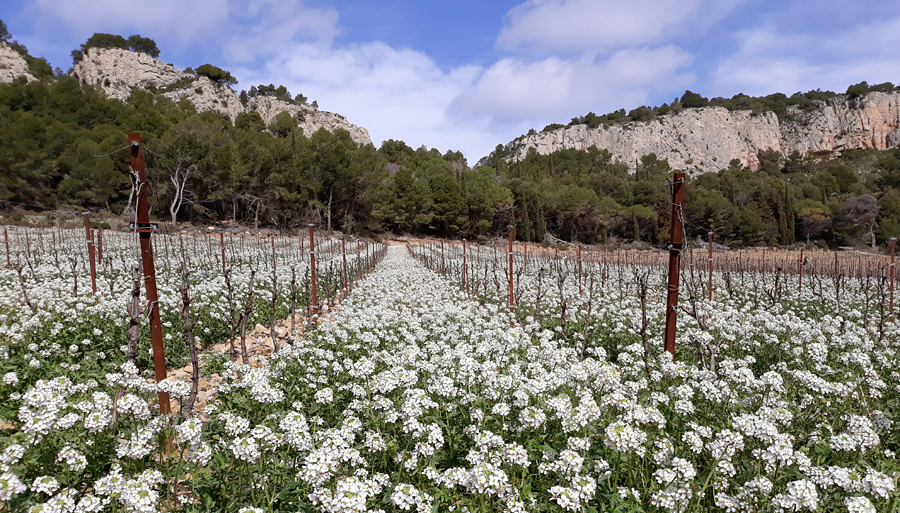
Vineyards bordered by woods and cliffs, a characteristic landscape of La Clape (Plan Vigné)
The video below gives an overview of the massif in March.
Link to the video in higher definition (HD 720p) and in Full HD (1080p)
The quality and originality of this limestone massif have led to it being classified as a remarkable site for its landscapes and under the “Habitat, Fauna, Flora” Directive for its ecological wealth.
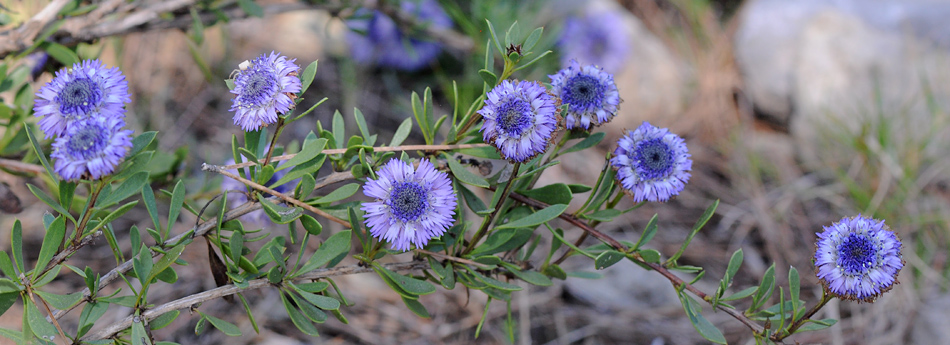

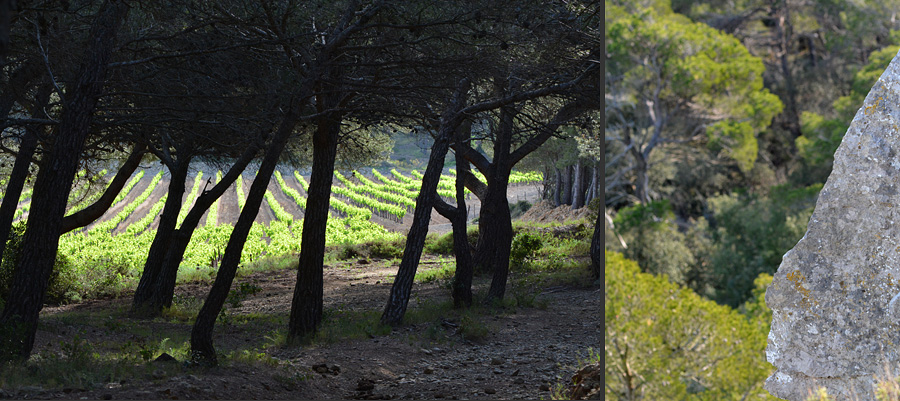
Viewpoint from Plan Vigné (top) / Crouzet area (center) / Chaucholes area (bottom)
In the heart of the massif, sheltered from the pines, is the chapel of Notre Dame des Auzils and its marine cemetery. Mentioned in the archives as early as 1223, the chapel was rebuilt in 1635 and then restored several times. Originally it would have been a hermitage and a refuge for travelers. This listed building houses a collection of votive offerings and models of ships donated by sailors from Gruissan. It offers an exceptional view of Gruissan and the Mediterranean.
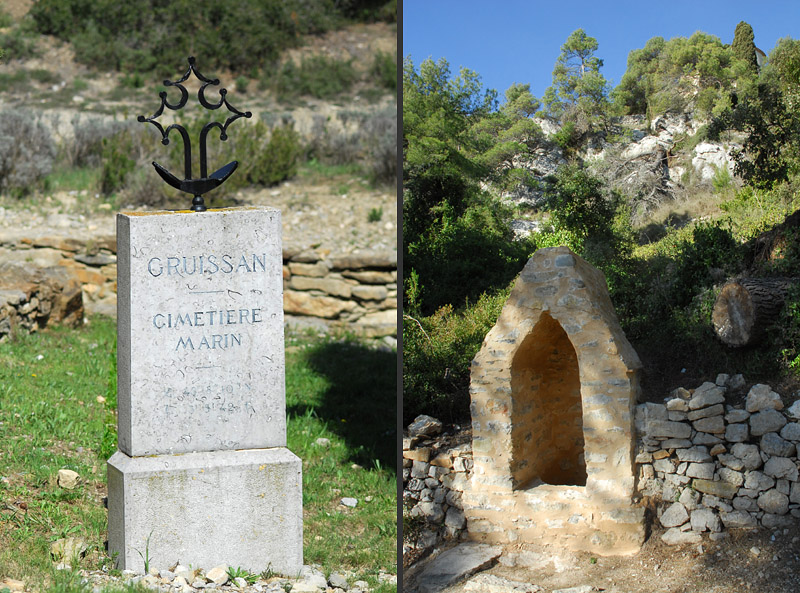
The marine cemetery
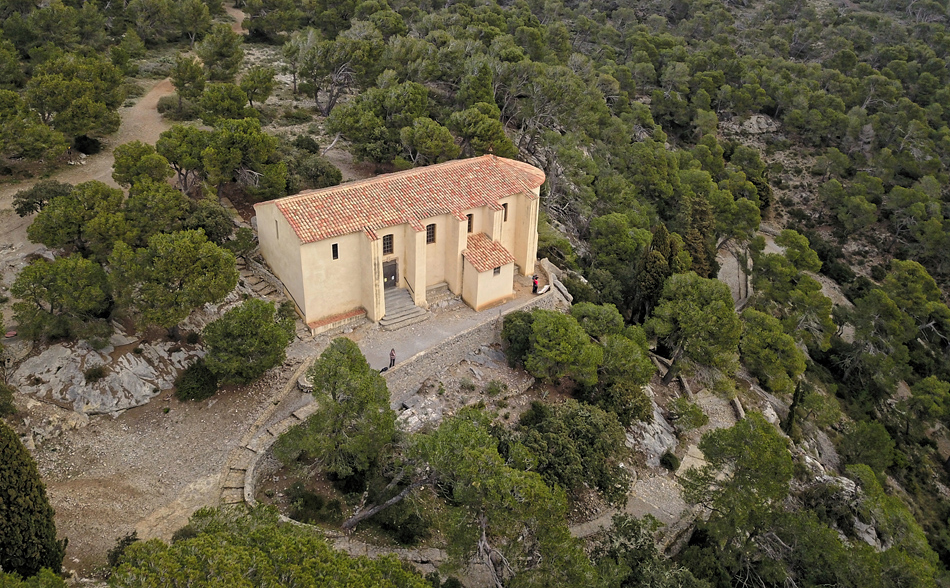
The chapel of Auzils
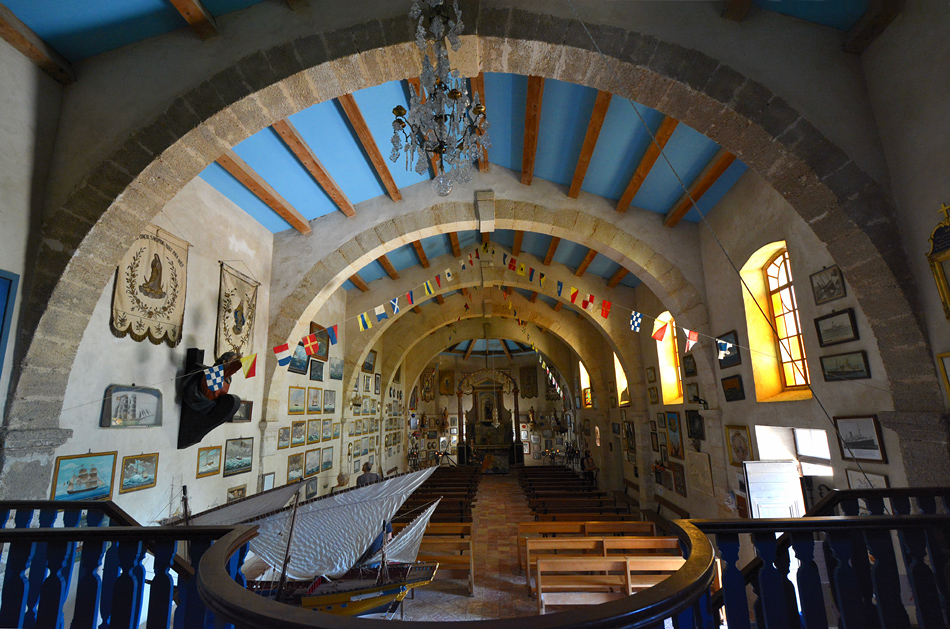
The interior of the Auzils chapel
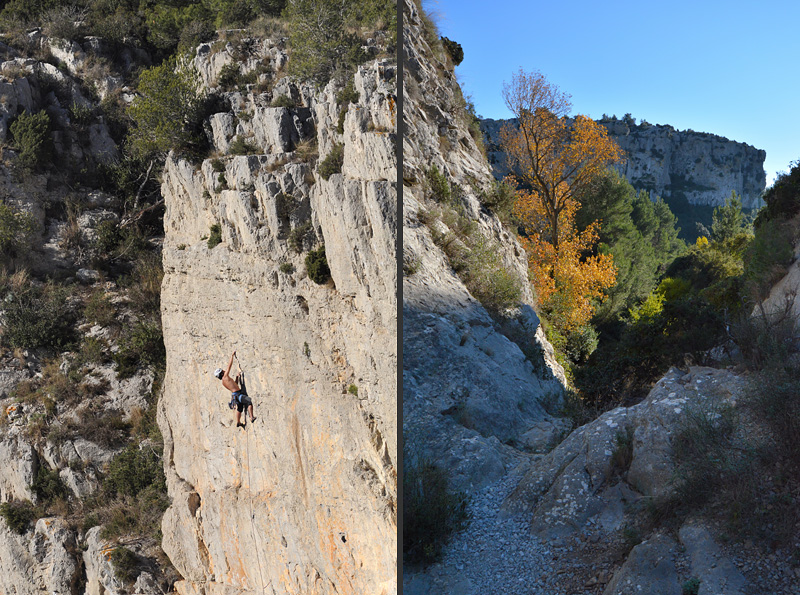
Rock climbing areas, La Chandelle (left) and Le Rec d'argent (right)
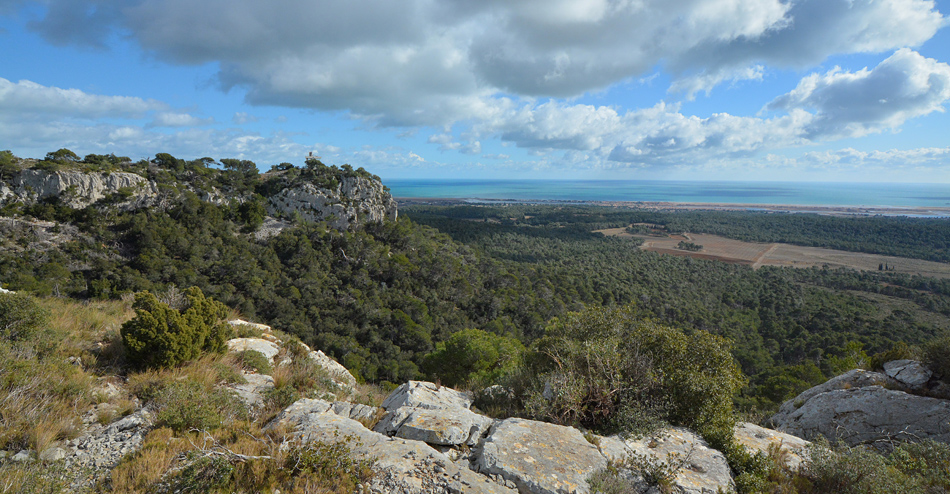
Panorama from the Notre-Dame plateau
With regard to orchids, the site is known to house some rare species such as Ophrys bombyliflora or Ophrys speculum...
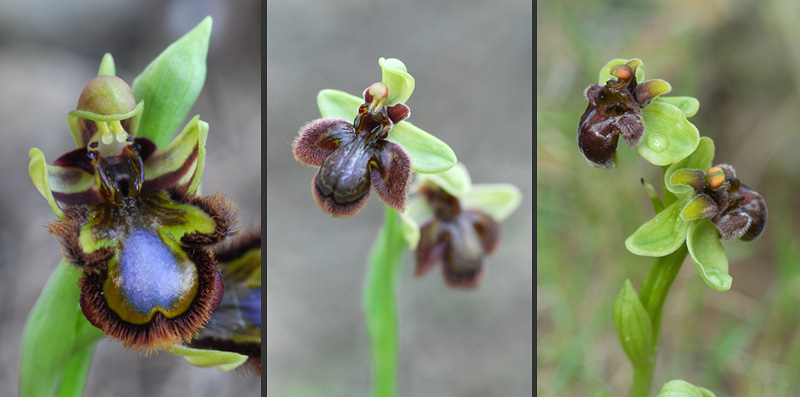
Ophrys speculum, bombyliflora and the hybrid between the two
... as well as hybrids between various species of the genus Ophrys.
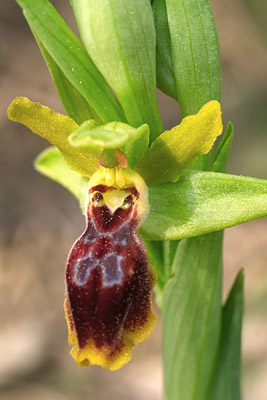 |
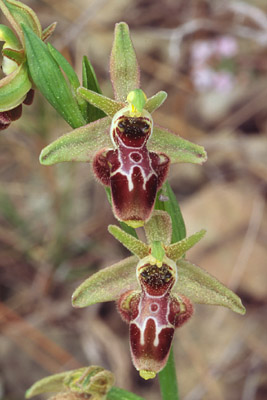 |
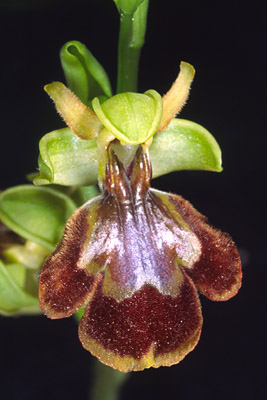 |
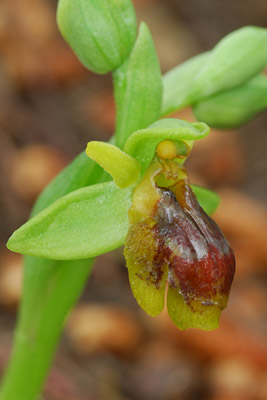 |
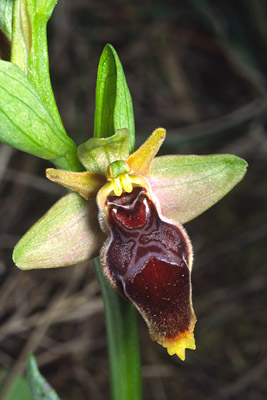 |
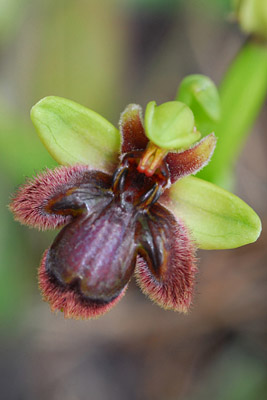 |
Some Ophrys hybrids seen at La Clape
(Op. arachnitiformis x lutea, arachnitiformis x scolopax, lutea x speculum, bombyliflora x lutea, lutea x scolopax, bombyliflora x speculum)
Other species that can be found on the Clape massif include: Ophrys aranifera (sphegodes), forestieri (lupercalis), bilunulata, Himantoglossum robertianum, Limodorum abortivum, Orchis purpurea.
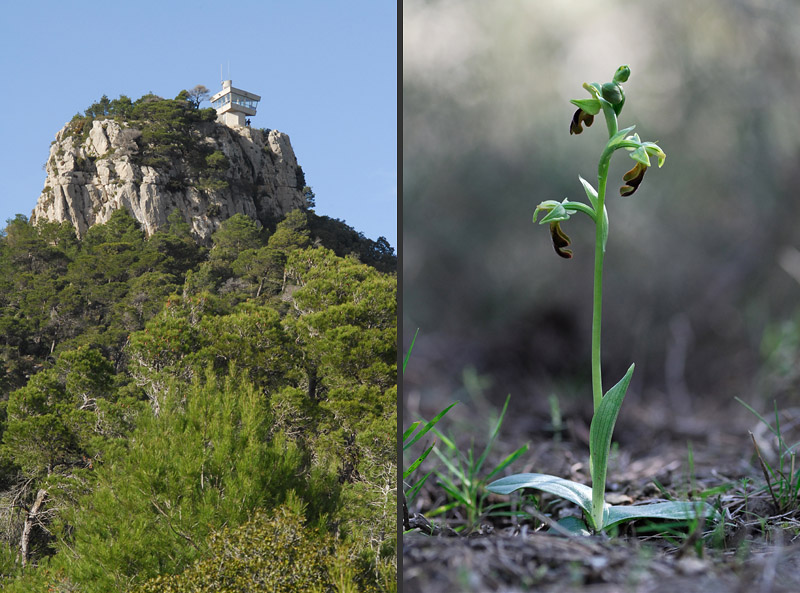
The lookout, Ophrys forestieri.
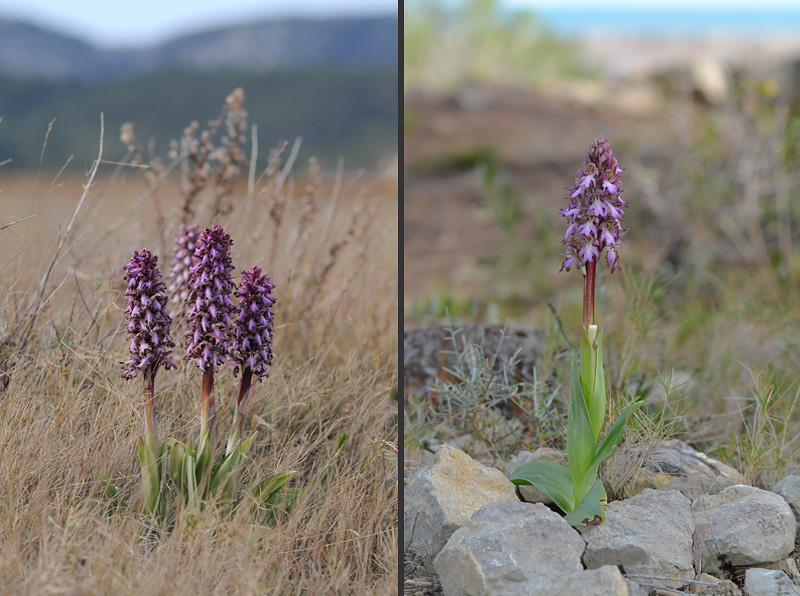
Himantoglossum robertianum.
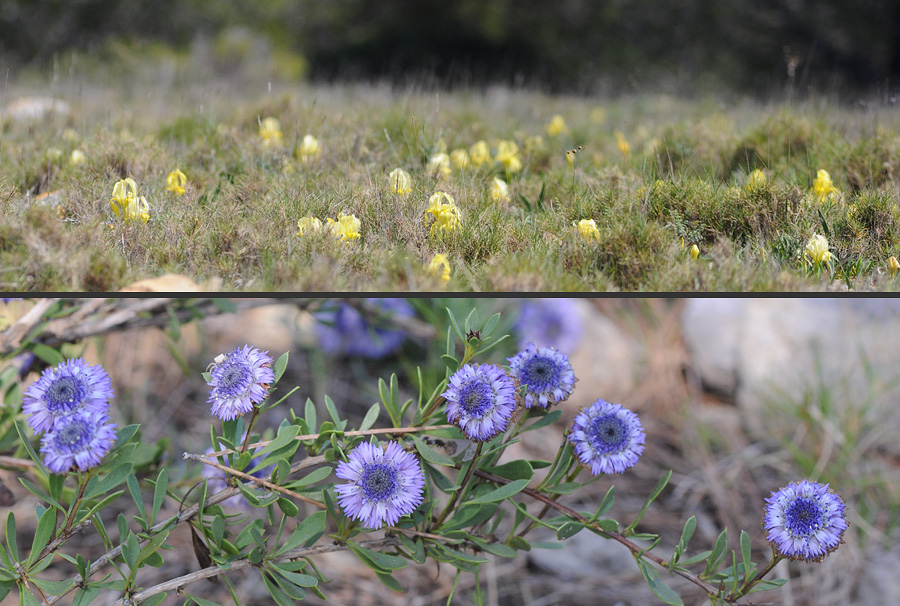
Iris lutescens and Globularia alypum.
Some of these species extend south of Gruissan, on the margins of the last limestone reliefs that dominate the sea and ponds
Back to Regions summary![]() Next page
Next page